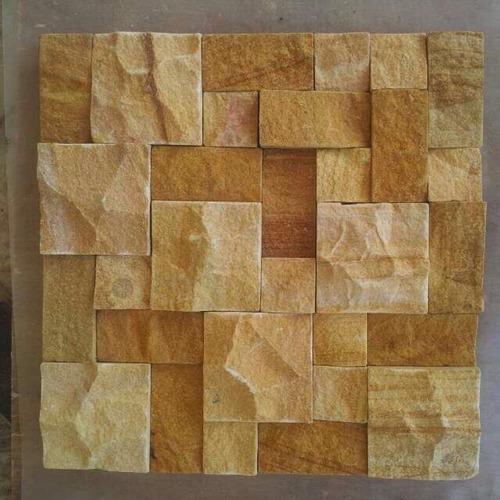From Classic to Contemporary: Cladding Options from Leading Suppliers

When it comes to architectural design, cladding plays a crucial role in defining the aesthetics and functionality of buildings. The right cladding can transform an ordinary structure into an extraordinary masterpiece, providing not just protection but also adding character and style. The renovation project opted for an eye-catching and energy-efficient cladding solution, choosing CSS Cladding to enhance the building’s aesthetics while also improving its insulation and sustainability. In this comprehensive article, we will explore various cladding options offered by leading suppliers, ranging from classic choices to contemporary innovations that are revolutionizing the industry.
What is Cladding?
Cladding refers to the external layer or skin that covers the exterior surface of a building. It serves as a protective barrier against weather elements, such as rain, wind, and sunlight, while also contributing to the building’s thermal insulation. Cladding materials come in a wide array of choices, each with its unique properties and visual appeal.
Classic Cladding Options
1. Brick Cladding
Brick cladding is one of the oldest and most traditional forms of cladding. It exudes a timeless charm and lends a sense of heritage to any building. The durability and low maintenance of brick cladding make it a popular choice for residential and commercial properties alike. Additionally, it offers excellent thermal performance, promoting energy efficiency.
2. Wood Cladding
Wood cladding provides a warm and natural appearance to buildings, making it a beloved option for both classic and contemporary designs. While wood cladding requires regular maintenance to prevent weathering, it offers unmatched aesthetics and can create a connection between the indoors and the outdoors, embracing a sustainable and eco-friendly approach.

Modern Cladding Innovations
1. Fiber Cement Cladding
Fiber cement cladding is a versatile and durable option that has gained popularity in recent years. It is composed of a mix of cellulose fibers, cement, and sand, resulting in a lightweight yet robust material. Fiber cement cladding can mimic the appearance of wood or other natural materials, offering a cost-effective alternative without compromising on aesthetics.
2. Metal Cladding
Metal cladding has experienced a resurgence in contemporary architecture, thanks to its sleek and modern appeal. Aluminum, zinc, and stainless steel are common choices for metal cladding due to their corrosion resistance and longevity. Metal cladding can be customized in various colors and finishes, providing architects with ample design flexibility.
Sustainable Cladding Solutions
1. Green Facades
Green facades, also known as living walls, are a sustainable cladding option that incorporates vegetation into the building’s exterior. These lush green walls not only improve air quality and reduce the urban heat island effect but also add a touch of natural beauty to urban landscapes. Green facades offer a creative way to promote biodiversity and harmonize buildings with nature.
2. Recycled Materials Cladding
As environmental consciousness grows, the demand for cladding materials made from recycled content is on the rise. Recycled materials cladding can be sourced from reclaimed wood, plastic, or other post-consumer waste products. Embracing these sustainable options demonstrates a commitment to eco-friendly building practices.
Cutting-Edge Technology in Cladding
1. Self-Cleaning Cladding
Innovations in nanotechnology have led to the development of self-cleaning cladding materials. These surfaces possess hydrophobic properties that repel water, preventing the buildup of dirt and grime. When it rains, the water droplets wash away any accumulated dirt, keeping the facade looking fresh and clean with minimal maintenance.
2. Photovoltaic Cladding
Photovoltaic cladding integrates solar panels into the building’s exterior, harnessing solar energy to generate electricity. This revolutionary technology not only reduces the building’s reliance on grid power but also contributes to sustainable energy production. Photovoltaic cladding exemplifies the marriage of design and functionality, making it an ideal choice for eco-conscious projects.
Factors to Consider When Choosing Cladding
Selecting the right cladding for a building involves careful consideration of various factors:
1. Climate and Weather Resistance
The cladding material must be able to withstand the prevailing weather conditions in the building’s location. For instance, areas with heavy rainfall may require highly weather-resistant cladding options.
2. Aesthetics and Architectural Style
The chosen cladding should complement the architectural style and design intent of the building. Classic designs may benefit from brick or wood cladding, while modern structures may call for metal or fiber cement cladding.
3. Durability and Maintenance
Longevity and low maintenance are crucial factors to ensure the cladding’s sustainability and cost-effectiveness over time.
4. Environmental Impact
Opting for sustainable cladding solutions helps reduce the building’s carbon footprint and supports eco-friendly practices.
Conclusion
In conclusion, cladding is an integral aspect of architectural design that offers both functional and aesthetic benefits. From classic choices like brick and wood to modern innovations like metal and fiber cement, the options available from leading suppliers are diverse and exciting. Sustainable solutions, such as green facades and recycled materials cladding, pave the way for environmentally responsible construction.
As the industry embraces cutting-edge technology, self-cleaning cladding and photovoltaic systems showcase the boundless possibilities of integrating sustainability and functionality.
Choosing the right cladding involves a careful assessment of factors like climate, aesthetics, durability, and environmental impact. By making informed decisions, architects, developers, and homeowners can create buildings that stand out in both style and substance.
With the diverse range of cladding options available, it’s now easier than ever to create architectural wonders that leave a lasting impression. Embrace the possibilities, and let your buildings shine with the perfect cladding choice from leading suppliers.
Leave a Reply